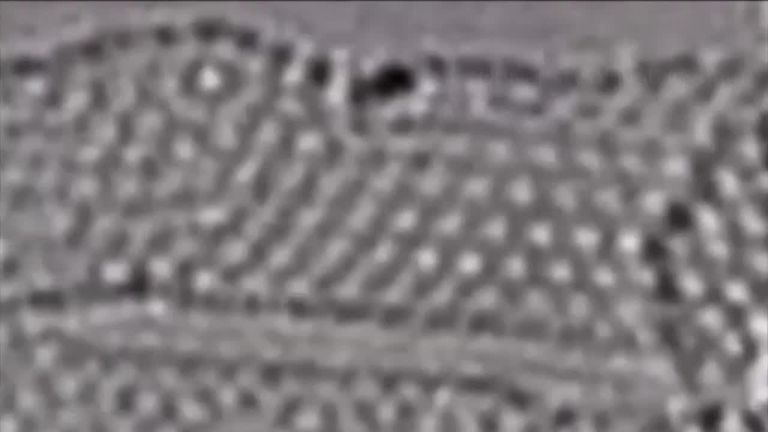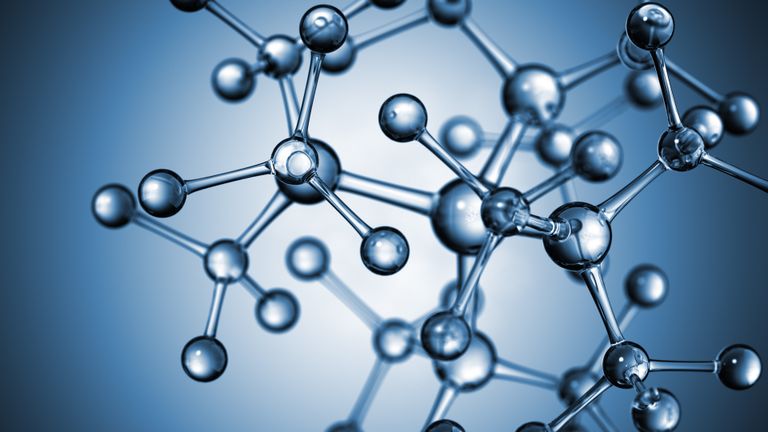Researchers capture footage of atoms bonding and separating for the first time
The researchers had to use molecular level technology to show the reaction, which involved atoms between 0.1 and 03 nanometres.
Wednesday 22 January 2020 15:19, UK
For the first time ever, scientists have managed to capture video of two atoms bonding and separating on a scale that is half-a-million times thinner than a human hair.
Through the use of "advanced microscopy methods", researchers from the University of Ulm in Germany and University of Nottingham in the UK managed to show the phenomenon as two atoms bond, then split up.
The atoms were between 0.1 and 0.3 nanometres, (1,000 millionths of a metre) - making capturing it difficult.
Researchers used a method called transmission electron microscopy (TEM), which involves shining a high-energy electron beam through a very thin sample, allowing them to capture what happens.
They used carbon nanotubes - thin hollow tubes of carbon - as tiny, molecular test tubes for the atoms, helping them "to catch atoms or molecules, and to position them exactly where we want", said Professor Andrei Khlobystov from the University of Nottingham.
He added: "In this case we trapped a pair of rhenium (Re) atoms bonded together to form Re2. Because rhenium has a high atomic number it is easier to see in TEM than lighter elements, allowing us to identify each metal atom as a dark dot."
The clip shows the two minuscule atoms bonding together then moving around and vibrating, before snapping and breaking the bond.
Dr Khlobystov, said: "To our knowledge, this is the first time when bond evolution, breaking and formation was recorded on film at the atomic scale. Electron microscopy is already becoming an analytical tool for determining structures of molecules."
He added: "We are now pushing the frontiers of molecule imaging beyond simple structural analysis, and towards understanding dynamics of individual molecules in real time."
"The team believe that one day in the future electron microscopy may become a general method for studying chemical reactions, similar to spectroscopic methods widely used in chemistry labs."




